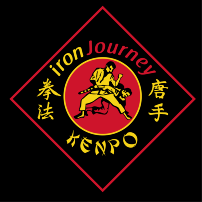Edmund Parker was a black belt in Judo at age 18, before he began his training with William Chow, it is also reported that he studied boxing as a youth. Ed Parker started training in 1952 under Frank Chow a fellow church member, Frank would teach many of the local youth out of the mormon renter. Frank noticed his ability and sent Ed to train with his brother William Chow.
Ed's duty with the Coast Guard let him finish this duty by 3pm, he would go down to the galley, where the Cook would give him the food they had not used - usually such things as eggs, bacon, and bread. He would take this home to the Professor; and his wife, Patsy, would prepare a meal for them while the Professor gave Ed a private lesson outside their home. In addition to the private instruction, Ed attended all the classes the Professor offered.
While in the Coast Guard and going to school at BYU in 1953 he was promoted to the rank of Shodan by William Chow.
In 1956 Ed Parker moved to Pasadena California and in 1957 he opened his Kenpo Karate school and would teach Professor Chow's Kenpo Karate. Ed Parker was a amazing martial artist strong fast and very dynamic, he moved a lot like his instructor William Chow. He was known for his street fighting ability and used it regularly while in Hawaii, his Kenpo is what worked for him in the streets. Ed Parker was very intelligent always analyzing what he saw, felt, experienced and this influenced what taught, his Kenpo was always evolving.
In the time period between 1962 and 1964 the art of Kenpo was systematically organized into techniques with names like "Crossing Talon", "Dance Of Death", etc. A lot of the Kenpo techniques we do today were created by Ed Parker and his senior students during this time. Many of the techniques we have today can't be found in the Hawaiian branches of Kenpo from William Chow. Ed Parker's organized his system into 32 techniques per belt Orange through Green Belt, for a total of 128 techniques, Brown 3,2,1 & Black 1 were extensions to the Orange through Green Belt techniques. His system has gone through organizational changes throughout the years since 1964, the last change was with the release of Infinite Insights into Kenpo Volume 5.
Ed Parker has to be credited with spreading Kenpo throughout the mainland, without him Kenpo wouldn’t be what it is today in America. Ed Parker was a very dynamic individual; with his teaching, approach, execution and insights into Kenpo he has made his mark on all Kenpo which is derived from him. Edmund Parker was a martial arts pioneer and is considered by many to be the father of American Karate.
